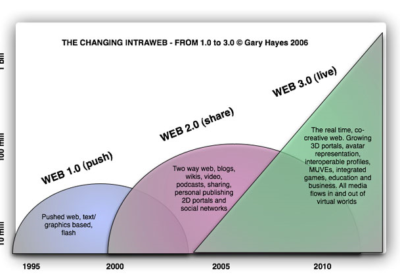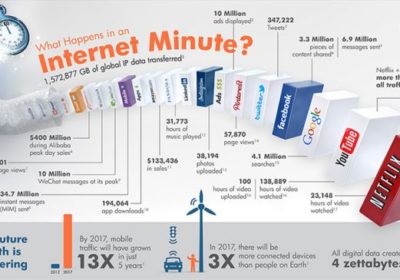Copy to your blog and complete the table below, reflecting on your experience of different pedagogical strategies. Where do your strengths lie? What opportunities exist for improvement to your practice?
- SAMR stands for Substitution, Augmentation, Modification, and Redefinition. Developed by Dr. Ruben Puentedura, it is a way to describe levels for the impact technology has on teaching and learning. At the basic level, technology enhances instruction.
Instead of using more words to describe SAMR, I thought I would find an image to describe it instead.

Image 2: SOURCE http://elearningfeeds.com/how-the-samr-model-improves-teaching-with-ipad
| Strategy | Focus questions | When have I experienced this strategy in the past? | How will I use this strategy as a teacher? |
| Higher-order thinking | Are higher-order thinking and critical analysis occurring? | During my journalism course we were asked to research different journalists, then write 300 words on (amongst other things), whether or not we thought that person was a real journalist and justify our opinion.
|
I used to teach in an on-line design class. I would give instruction on how to create a particular item and the students then had to reproduce something similar using the foundations laid down by me. All the designs submitted were very different. |
| Deep knowledge | Does the lesson sequence cover operational fields in any depth, detail or level of specificity? | Learning grammar at CQUniversity. The correct use of grammar, punctuation and sentence structure underpinned the entire media writing course. The course required students to write a blog, share that link, and invite other students to comment not only on the subject matter, but also on the skill level of the writer. |
Deep knowledge is establishing complex connections to a topic and demonstrating this knowledge in real life. |
| Deep understanding | Do the work and response of the students provide evidence of depth of understanding of concepts or ideas? | Working collaboratively with other students on a project we have to incorporate our ideas, the ideas of the client we were working for, ensuring that we stayed within the guidelines set down by the university.
|
|
| Substantive conversation | Does classroom talk break out of the initiation /response /evaluation pattern and lead to sustained dialogue between students, and between teachers and students? | Happens all the time in classes. A subject is presented and as a whole we contribute and build on ideas. | |
| Knowledge as problematic | Are students critiquing and second-guessing texts, ideas and knowledge? | Understanding ideas and concepts so deeply that many opinions can be debated and there is no right answer. | Engage students in a collaborative discussion about what it means to be an Australian. Give them a range of texts presenting contrasting positions, and have them discuss the dominant messages in the texts . Then provide feedback on whose interests were served and whose interests marginalised by the different texts (Productive Pedagogies).
|
| Knowledge integration | Does the lesson sequence range across diverse fields, disciplines and paradigms? | Integrated school knowledge is identifiable when either (a) explicit attempts are made to connect two or more sets of subject area knowledge, or (b) no boundaries between subject areas are readily seen (Productive Pedagogies). | Design a collaborative project with students spanning a few different fields. EG: The school puts on a play. Drama students perform, Film and TV students set up cameras and turn it inot a movie and English and/or business students marketing both the play and the movie to the general public to raise funds for the school. |
| Background knowledge | Is there an attempt to connect with students’ background knowledge? | Using my background in Digital Media to navigate this course. | Connect old information with new information by researching what students prior knowledge is, either by looking at the curriculum at previous age groups or through a brainstorming session with the class.
|
| Connectedness to the world | Do the lesson sequence and the assigned work have any resemblance or connection to real-life contexts? | Doing Prac, in any subject gives connectedness to the world | Doing vet courses (CERT II or III) while still at school. |
| Problem-based curriculum | Is there a focus on identifying and solving intellectual and/or real-world problems? | My daughter’s school has a spare allotment and the students were asked to submit proposals on what they thought would be the best use of the land. | I am working with the school administration, teachers and students, in conjunction with local authorities to facilitate changes to said block. (this is a real life example that is currently underway) |
| Student direction | Do students have any say in the pace, direction or outcomes of the lesson sequence? | A uni course was of the students choosing. It could be work placement, research etc.. The student had to choose from the above and then if it was work placement, organise their own placement and put forth a proposal of what they would do during their placement. | “When Year 8 students entered the high school at the beginning of the year they were presented with two questions: ‘What do you want to learn about yourself?’ and ‘What do you want to learn about the world?’ These questions served as the basis of the Year 8 curriculum and throughout the year, the students were involved in the determination of both the content and the activities. The project proved most successful in changing teaching styles and engaging the students in productive learning (Productive Pedagogies).” |
| Explicit quality performance criteria | Are the criteria for judging student performance made explicit? | Explicit is telling students EXACTLY what they will be assessed on.
Implicitly is developing a strategy for students to construct their own outcomes. |
I liked the example given by (Productive Petagogies). The students all had various roles in putting together a newspaper and from there subediting. During this process they also learned about the genre and style of each text. This idea kind of straddles both EXPLICIT and IMPLICIT.
|
| Cultural knowledges | Are diverse cultural knowledges brought into play? | Celebrate all cultures. | Have a culture day where students can choose a culture, if they don’t want to do their own and present findings to the class by way of imagery, video or, dare I say it – powerpoint.
|
| Active citizenship | Are attempts made to foster active citizenship? | Active citizenship involves acknowledging that in a democratic society all individuals and groups have rights and responsibilities. They have the right to engage in the creation and re-creation of that democratic society, and to participate in all of the democratic practices and institutions within that society. They have the responsibility to ensure that no groups or individuals are excluded from these practices and institutions (productive Pedagogies). | Truly inspiring is the example given in Productive Pedagogies of the group of students who collectively identified a concern (dust in classroom), then discussed, not only how to fix the problem, but who needed to be involved. The result was a path and gardens in that area and it was completed via a project that involved the local community. |
SAMR stands for Substitution, Augmentation, Modification, and Redefinition. Developed by Dr. Ruben Puentedura, it is a way to describe levels for the impact technology has on teaching and learning. At the basic level, technology enhances instruction.




